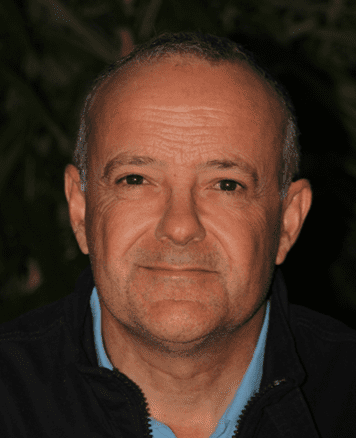
In 1986 I’ve joined a team of Engineers, Architects, Marketing leaders who were working on a new generation of Power Circuit Breakers: MasterPact. At that time, I didn’t realize that those highly skilled people were shaping the future of Merlin Gerin which became Schneider Electric a few years later. Today, 37 years after the launch of the 1st generation, MasterPact is still the reference in the industry.
I learned a lot during those first few years. And I realized how important it is to identify latent needs from our customers and to develop innovative solutions to fulfill those needs.
I also realized as well how important it is for a design engineer to build its expertise to overcome the multiple technological challenges that one faces and to delight customers through product excellence. Finally, I understood that working as a team is the key to success in the company. This first professional experience helped me grow as Design Engineer.
Transition to Customer Satisfaction and Quality

After this first amazing experience in R&D, I had the chance to take a new role as project quality leader for a strategic program of molded circuit breakers development.
I started interacting much more with customers, meeting very demanding ones and this helped me realize what my responsibilities were as a quality leader. I joined the Six Sigma program and got certified Black Belt before reaching the Master Black Belt level.
I defined and led the quality plan for this program. Of course, hard skills are important as I wrote, but at that time I also learned how crucial soft skills are. You need to be able to challenge your team on quality aspects, to convince your stakeholders, to find the best compromises. It was a great experience in terms of achievements and learnings, and thanks to this new role I started traveling around the globe, working with people from different cultures, understanding the importance of inclusion and diversity.
Leveraging Culture Differences to Strengthen our Customer Culture

I remember my first face to face meeting with an important customer, in Shanghai. He was convinced that Schneider Electric had no robust and reliable solution capable of connecting different circuit breakers together to get a full digital system of protection. We were trying to beat out an important competitor and win the contract. It was my first travel to China. I spent the entire day with this customer, I explained our system solutions and made a live demo: the meeting room was full of circuit breakers that I was controlling from my laptop.
At the end of this intense meeting, I got a round of applause. I heard later that we won the contract, and we got other sale opportunities afterwards. After this experience I was not totally the same. Collaborating with people from different cultures is a chance but it’s also a real challenge. After that experience in China, my manager suggested me to attend a training focusing on cultural differences. I went through those differences from one country to another and realized why it was sometimes difficult to find an agreement among people thinking differently as per their own culture. This is probably one of the best trainings and one of the most impactful I had in Schneider Electric.
We were not ready for the “Ready LED”: the importance of developing innovations adoption
As a Project Quality leader, I was working on the design risk analysis for this new generation of electronic trip units for molded circuit breakers. Based on this risk analysis I proposed to monitor the good health of the trip unit then to display a status through a LED indicator located on the front face of the circuit breaker. The concept of “Ready LED” was born.

The “Ready LED”, which is small green light, blinks slowly when the standard protection functions of the electronic trip unit are operational. It sounds simple but at that time, it was a revolution! Such type of protection health indicator had never been used before for low voltage breakers. But the product owner was not ready to adopt this innovation. I was convinced of the need to embed such function as it was answering customers’ concerns, and still, the concept got rejected on a first attempt, I was so frustrated. Developing innovative solutions is a must, but it takes time.
Finally, the decision to embed this “Ready LED” was made by the top management after many discussions and arbitrations. I learned an essential lesson since that day: you need to spend time to communicate any new idea, to convince people and sometimes, you also need accept negative feedback. This is part of the game.
Now this “Ready LED” is an essential element of our breakers, and it has opened the gate to more sophisticated health status predictive systems that we propose now to our customers, enabling the business of services.
Developing my expertise as a personal target

After this first experience in quality, I decided to go further and to take my expertise to the next level. I attended multiple trainings that hone my skills where I am able to develop systems that are safe for our customers to use.
My second ambition was to share my knowledge with others. I wanted to help newcomers to grow in their position. I was certified as Electrifier (Level 1), then Senior Electrifier (Level 2) and now I am a Fellow Electrifier (Level 3). The Electrifier program is a way to recognize employees who demonstrate outstanding achievements, expertise, and leadership. More than a certification, the program fosters a dynamic community that furthers innovation and professionalism while bringing impactful business solutions to ensure Life Is On.
My greatest satisfaction, and probably one of my biggest achievements in my career, is to see people growing and becoming great quality professionals with my help. That’s where I feel I have the biggest and the most significant impact for the company, as everything starts with People.

My motivations to stay in Schneider Electric
Sometimes, people ask me: why did you stay so long in Schneider? That’s an interesting question. Schneider Electric is a company that always adapts its strategies to the complexity of the world, keeps up with the evolution of technologies (digital, IA) and develops more sustainable business. This environment has always given me many opportunities to embrace new challenges, to develop new skills in different domains, to adapt myself to various situations and cultures. So, to answer the initial question, I would say: I’ve stayed with Schneider Electric because it’s a worldwide market leader that permanently shapes the future of electrical distribution and encourages employees to step out of their comfort zone to develop their skills. This was an incredible journey and a great chance that I didn’t want to miss.
What drove my career evolution
Looking back at my career I would say that I had a few important drivers guiding me all along the way. Hence, I’d like to share some tips for the new generation of talents to come:

- Be curious, learn and keep in mind that whatever you think you know, you have even more to learn; it’s a no end story!
- Have some good times, have fun with friends and family, play sports, release the pressure and stay in good health. Personally, Cycling and skiing are my favorite.
- Transfer your knowledge and mentor others: we succeed as a team not as individuals.
- Trust yourself and try new approaches. I always have in mind the sentence from Nelson Mandela: “you either succeed or learn”
- If things are not going as you expected, just ask yourself: did I do my best?
Feeling inspired?
For those of you who are not yet part of the Schneider team: If you’re passionate about making an impact, curiosity fuels your quest for knowledge, and mastery is your driver—then you’ll feel right at home with us. Consider joining our team to shape the future together and for a chance to become an Electrifier.
Explore our careers page for exciting opportunities that align with your skills and passions. Or sign up for our newsletter to stay updated on new openings and insights.
About the author

Marc Ferrazzi
Marc is Design for Safety and Reliability Leader for Industrial Automation. He started his career in Schneider Electric (Merlin Gerin) in 1986, taking a position of Design Engineer in Electronics. After 15 years spent designing trip units for power circuit breakers, he moved to a new role of leader in project quality. Then he occupied more transverse positions in quality and customer satisfaction, developing excellence in offer creation for different lines of business. Marc is certified Master Black Belt in Six Sigma, Design for Six Sigma (DFSS) and Electrifier Level 3 (Schneider internal expertise recognition program). He is based in France, In Grenoble.



Add a comment